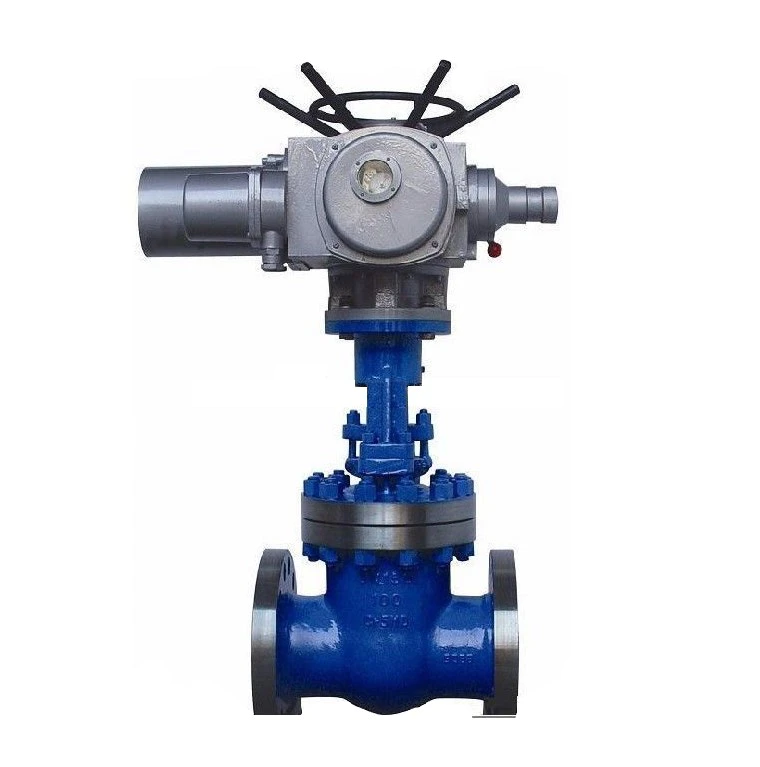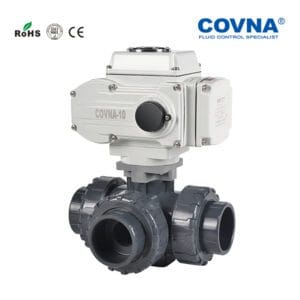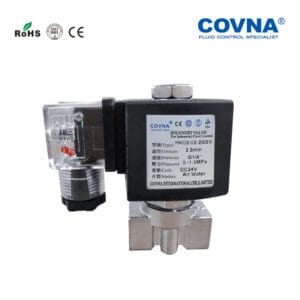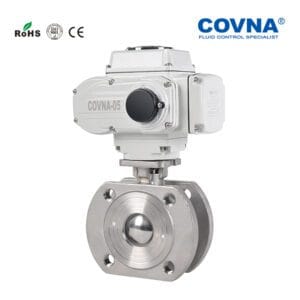COVNA Products

Cast Iron Multi Turn Electric Actuator Gate Valve
The necessity of an electric actuator for a multi-turn valve is also associated with the Z design. Its primary function is to open, close, or modify the valve configuration. Considering its capabilities for remote, centralized, and automated operation, it possesses an often overlooked versatility, and is also prized for its lightweight design. Its other characteristics, such as its compact size, reliability, and control system sophistication, make it easy to apply and maintain. It can operate with various types of valves that open and close using linear motion, such as gate valves, globe valves, diaphragm valves, anchored gate valves, and sluice valves.
- Model: HK60-Z-Z
- Size Range: 2'' to 16''
- Pressure Range: ASME CL, 150, 300, 600, 900, 1500, 2500
- Material: Stainless Steel
Technical Parameters of Valve Actuator
| Power supply | general: single-phase 220v, three-phase 380v(50Hz), long distance DC24V |
| special: single-phase 110v, three-phase 415v, 660v(50Hz, 60Hz) | |
| Working environment |
Ambient temperature: -20 ~ + 60 ℃ (special temperature environment can be customized) |
| Relative humidity: 95% (at 25 ° C) | |
| The outdoor type can be used in the places without inflammable / explosive and corrosive medium | |
| d I | applicable to non-excavating workinarea for coal mine |
| d I BT4 | applicable to the environment with IIA , IIB grade TL-T4explosive gas mixture , can be used in the factory |
| Protection level | Outdoor type and explosion-proof type are IP55 (IP65, IP67) |
| Working time | short time 10 minutes (15-60 minutes for special order) |
Electric Actuated Wedge Gate Valve
- Applicable industries: electric power, metallurgy, petroleum, chemical engineering, paper-making, sewage disposal and so on.
- There are many types for multi-turn electric actuator:
- outdoor type, explosion-proof type, integral typeintegral-regulation type, integral explosion-proof type, integral-regulation explosion-proof type and so on.
- It can be divided into torque type and thrust type according to the connection type
The actuator on my automated valve operates, but the valve won’t turn. Why?
Most likely the valve stem or actuator coupling is broken.
Why doesn’t my valve open or close completely when the actuator operates it?
The electric actuator limit switches or the pneumatic actuator position stops are not correctly adjusted.
When I energize the solenoid on my pneumatic actuated valve, the valve won’t turn. How come?
Probably because there is no air pressure to the solenoid or dirt has jammed it. Also, debris might be trapped inside the valve. Or, the air pressure is not sufficient to operate the actuator. Remember: measure air pressure at the actuator, not at the compressor.
Can I buy an actuator from one manufacturer and mount it to a valve from another manufacturer?
Maybe. First, be sure that the actuator torque output is sufficient to turn the valve reliably. Second, you will have to fabricate a custom mounting bracket and coupling to connect the actuator to the valve.
What happens if I lose power to my electric actuator in the middle of an actuation cycle?
The valve will stop somewhere between full open and close. When power is reapplied to the original circuit, the actuator will complete the cycle.
I ordered a fail open pneumatic actuated valve by mistake. I needed a fail closed one. What can I do?
To make the change just remove the actuator from the valve and turn it, or the valve stem, 90 degrees and remount the actuator.
I’ve installed my automated valve in the line, but now I don’t know if the valve is in the open or closed position. How can I find out?
Remove the actuator from the valve and check the valve stem. Most ball valves have stem flats at right angles to the flow when the valve is in the off position. On butterfly valves check the stem flow arrow marking.
Do I have to have the solenoid valve that controls the air supply to my pneumatic actuator mounted right on the actuator?
Remove the actuator from the valve and check the valve stem. Most ball valves have stem flats at right angles to the flow when the valve is in the off position. On butterfly valves check the stem flow arrow marking.
How do I wire up my electric actuator?
Check the electric wiring schematic that came with the actuator for the correct hookup. Sometimes a copy is inside the actuator cover. If it is missing, don’t guess about the connections. Call the manufacturer for a schematic.
I’ve just installed an electric actuated valve and when I power it, it turns the valve 360 degrees and won’t shut off. What’s wrong?
The actuator is wired incorrectly (check the schematic accompanying the actuator), or the external control switch is not the correct type for the actuator.
My electric actuators cycle time is way too fast, can I slow it down?
Not unless you bought it with an optional speed control.
I just replaced a solenoid valve with an electric actuated valve and it won’t work. Why?
Actuators and solenoid valves require different types of electrical control switches. SPDT for actuators, SPST for solenoids. Check the actuator wiring schematic for the correct wiring and switch type.











